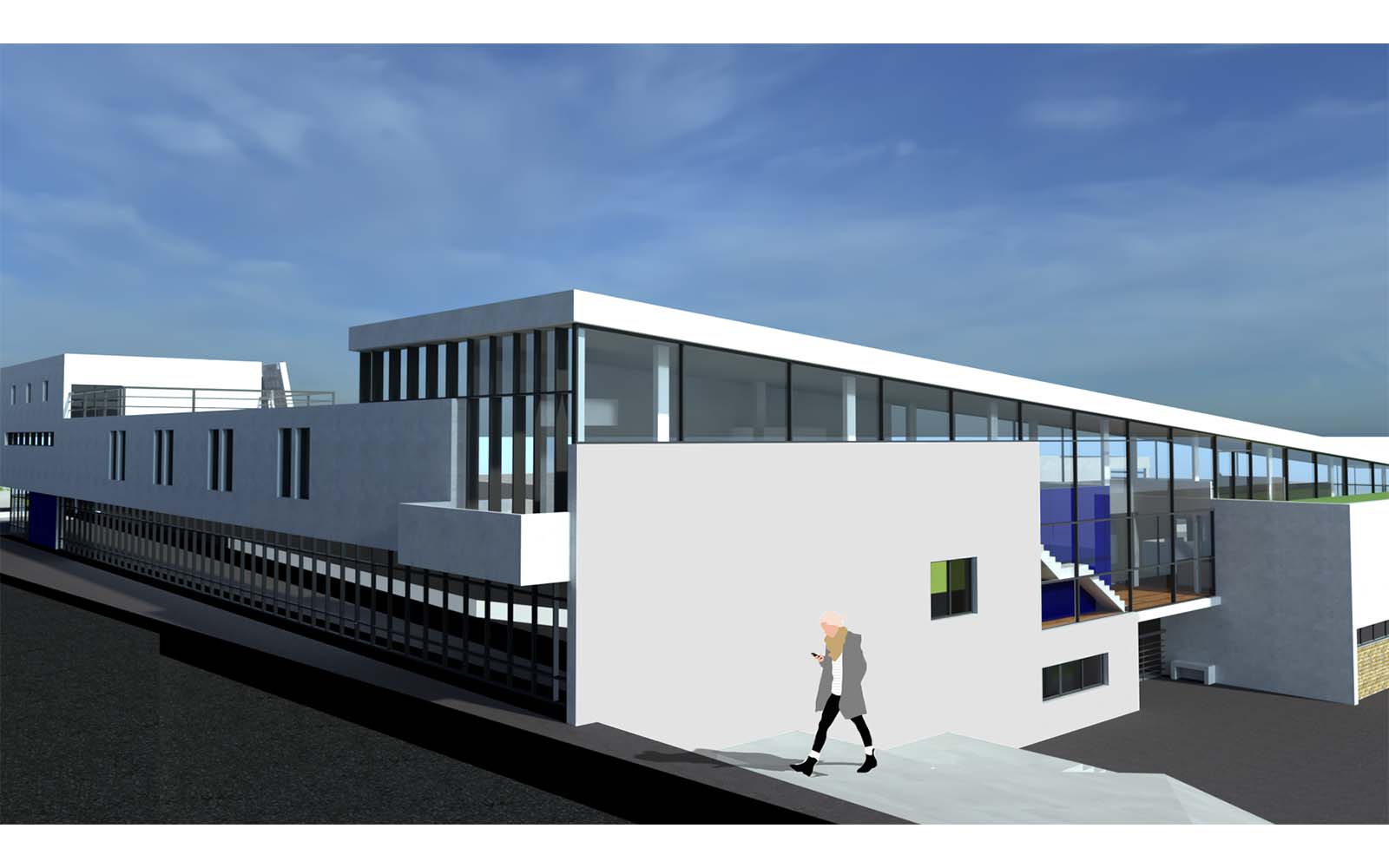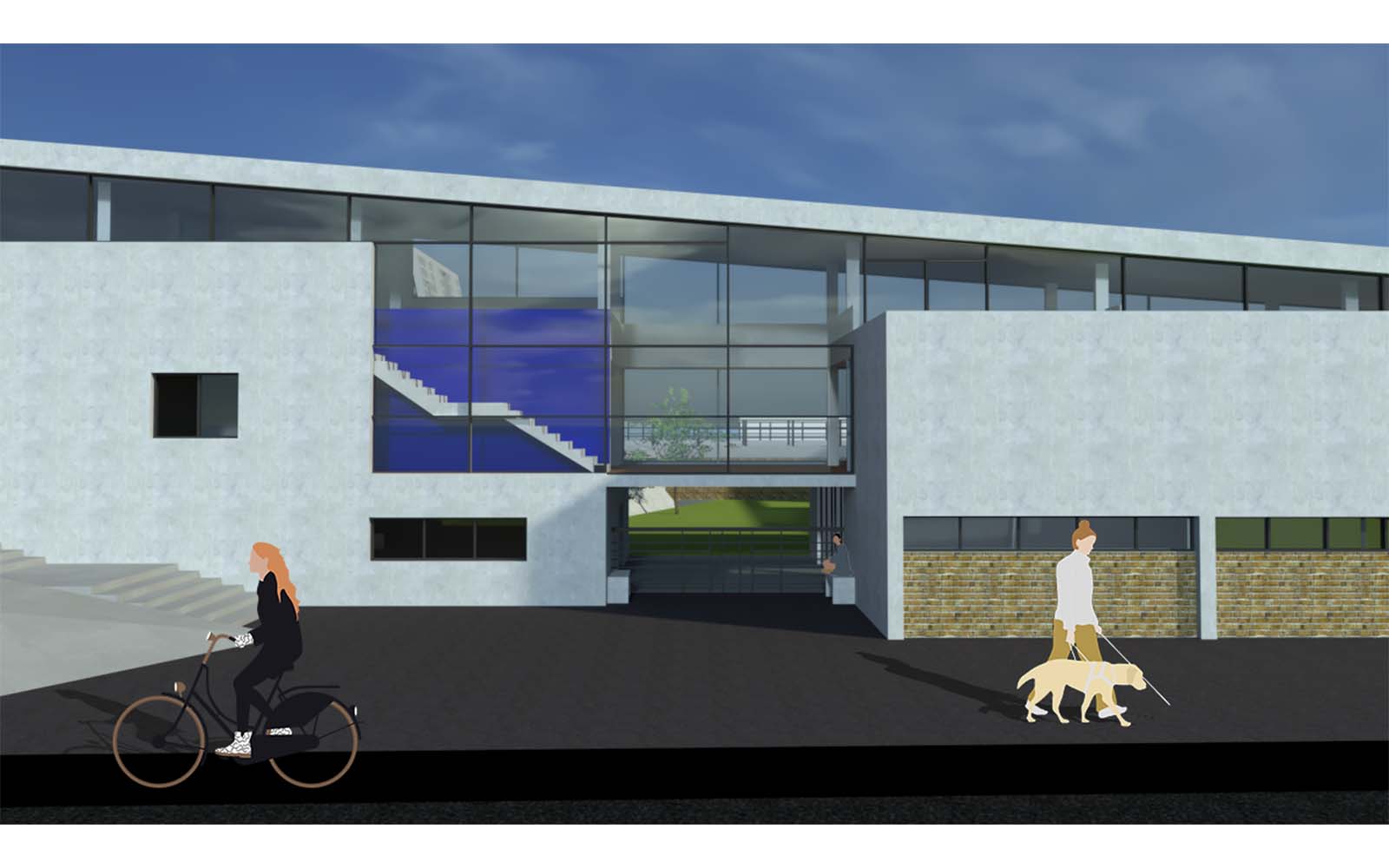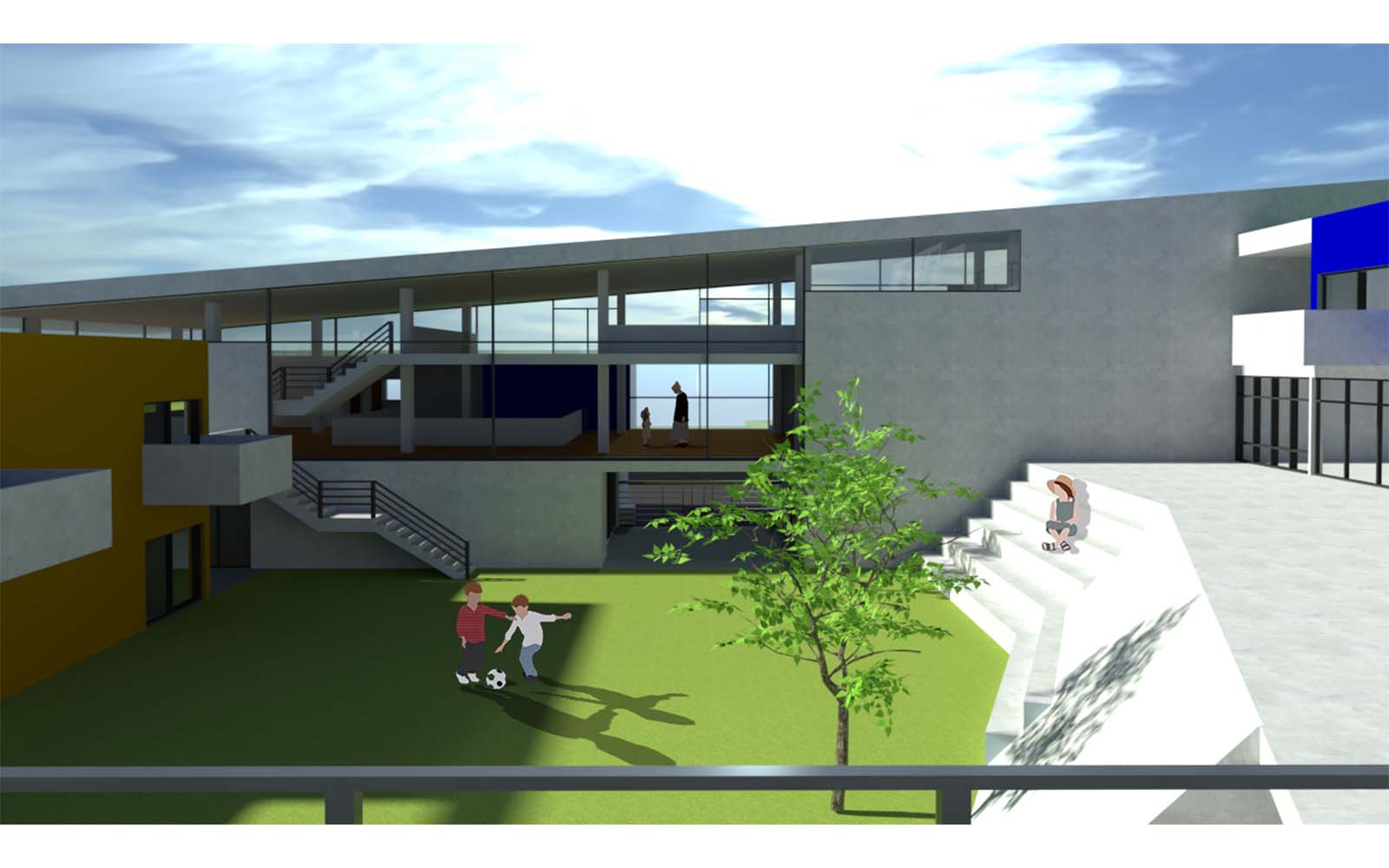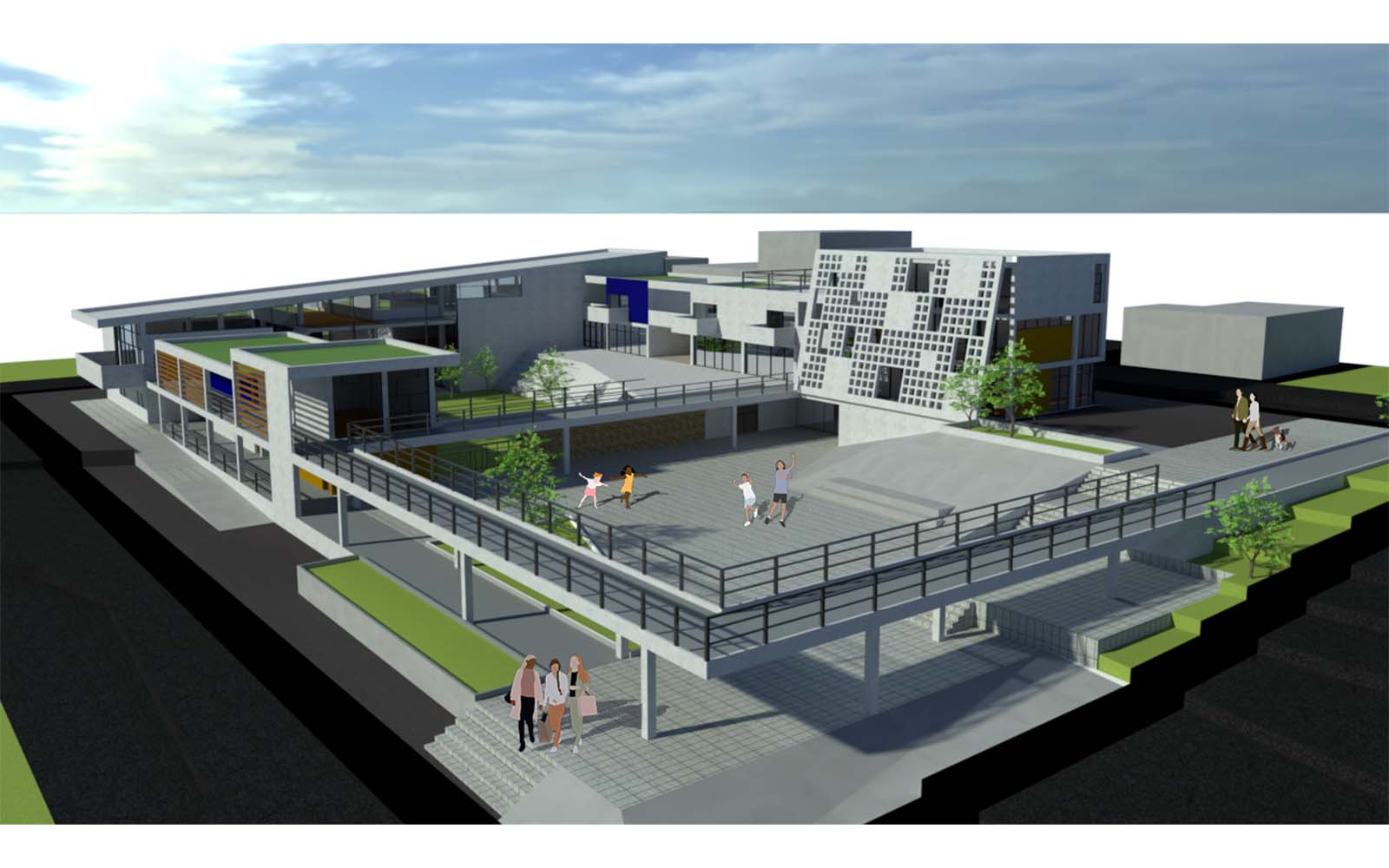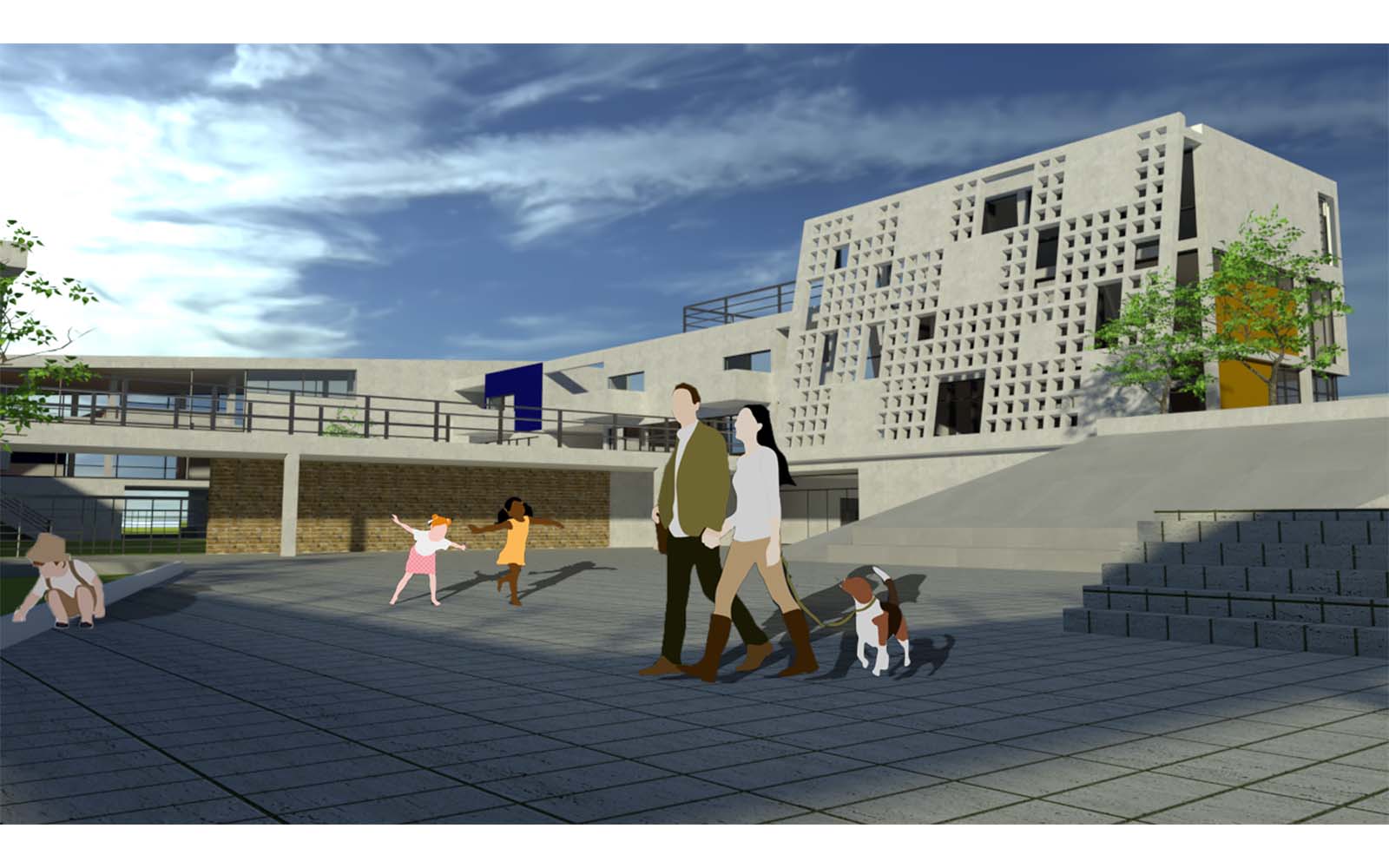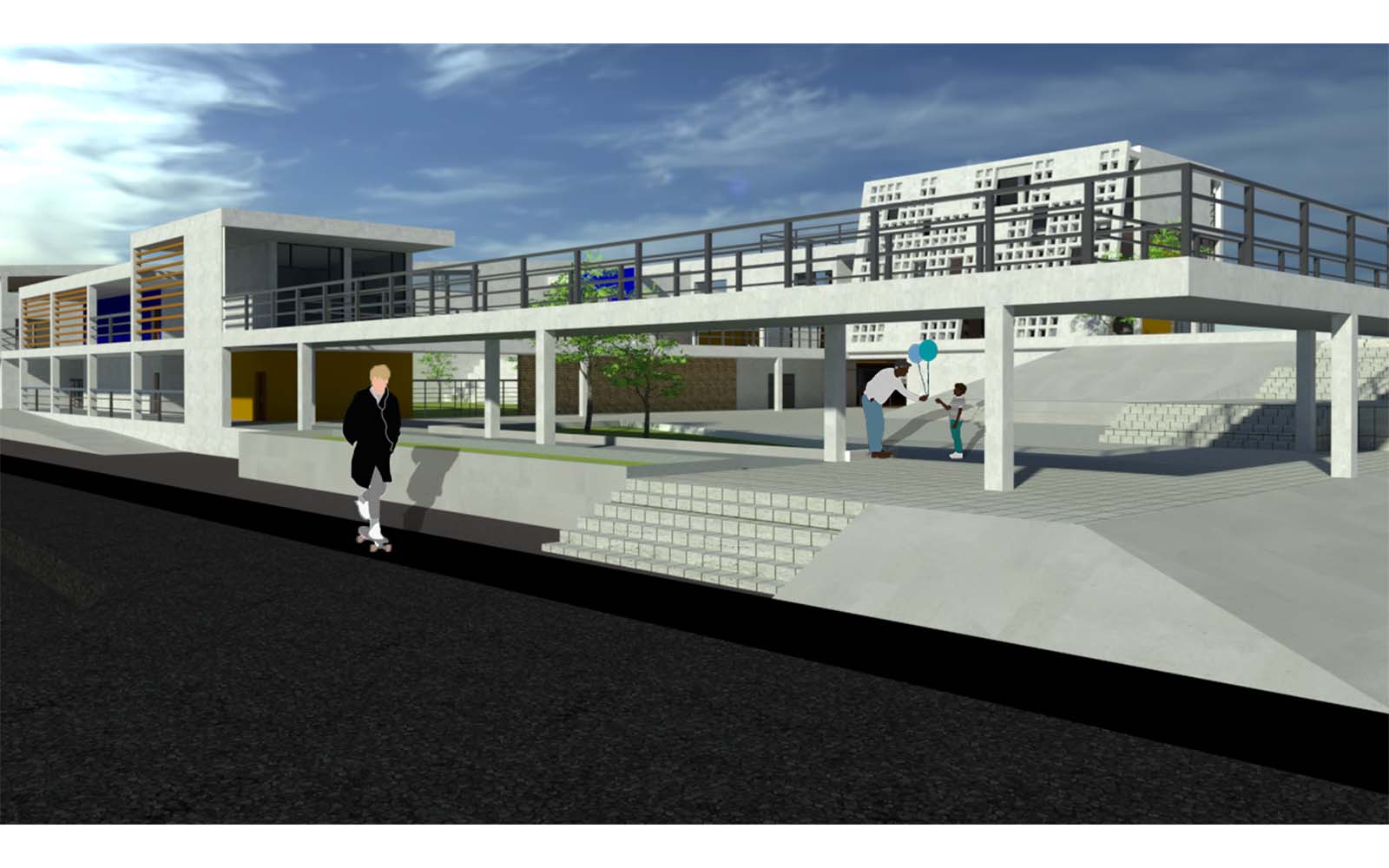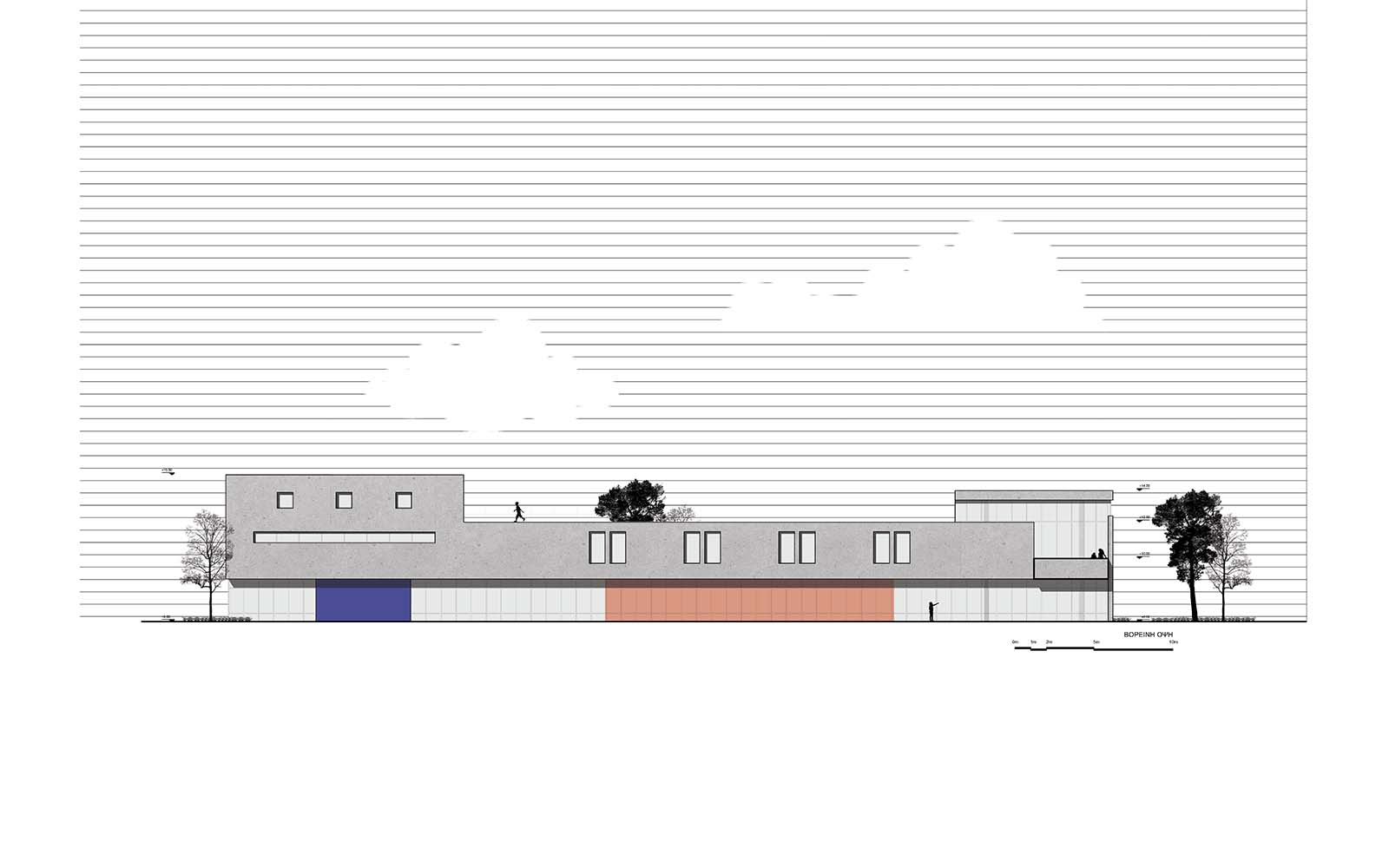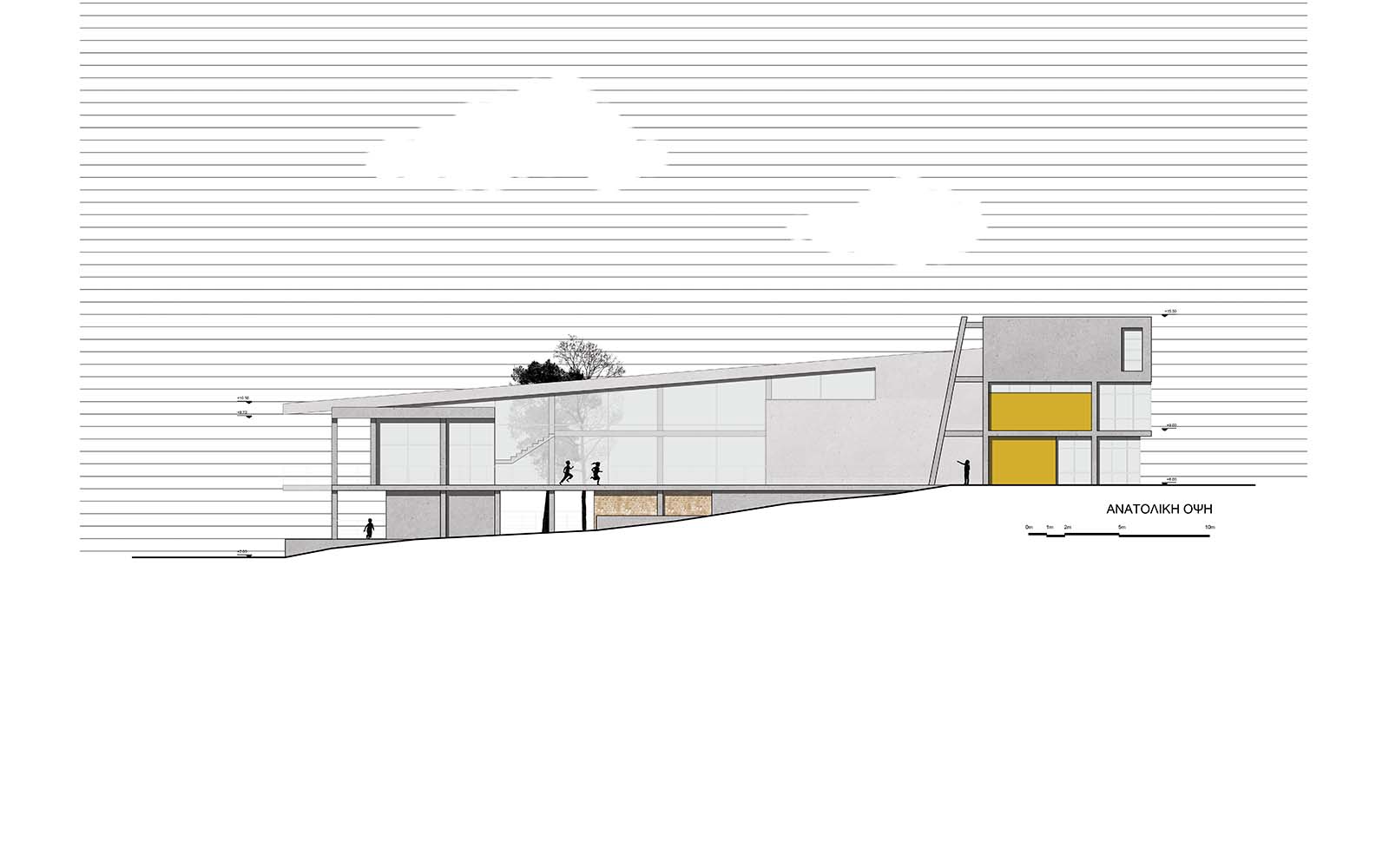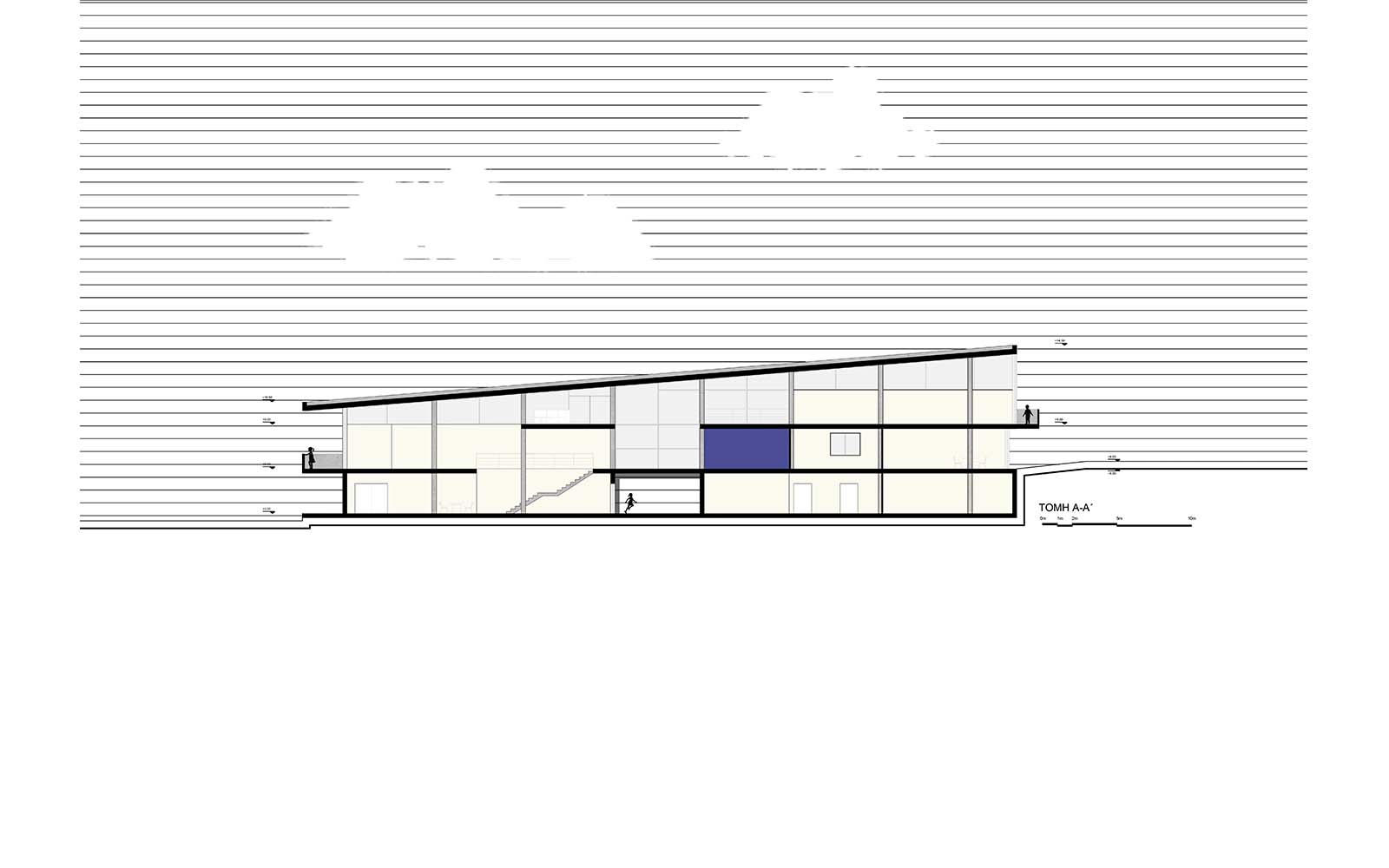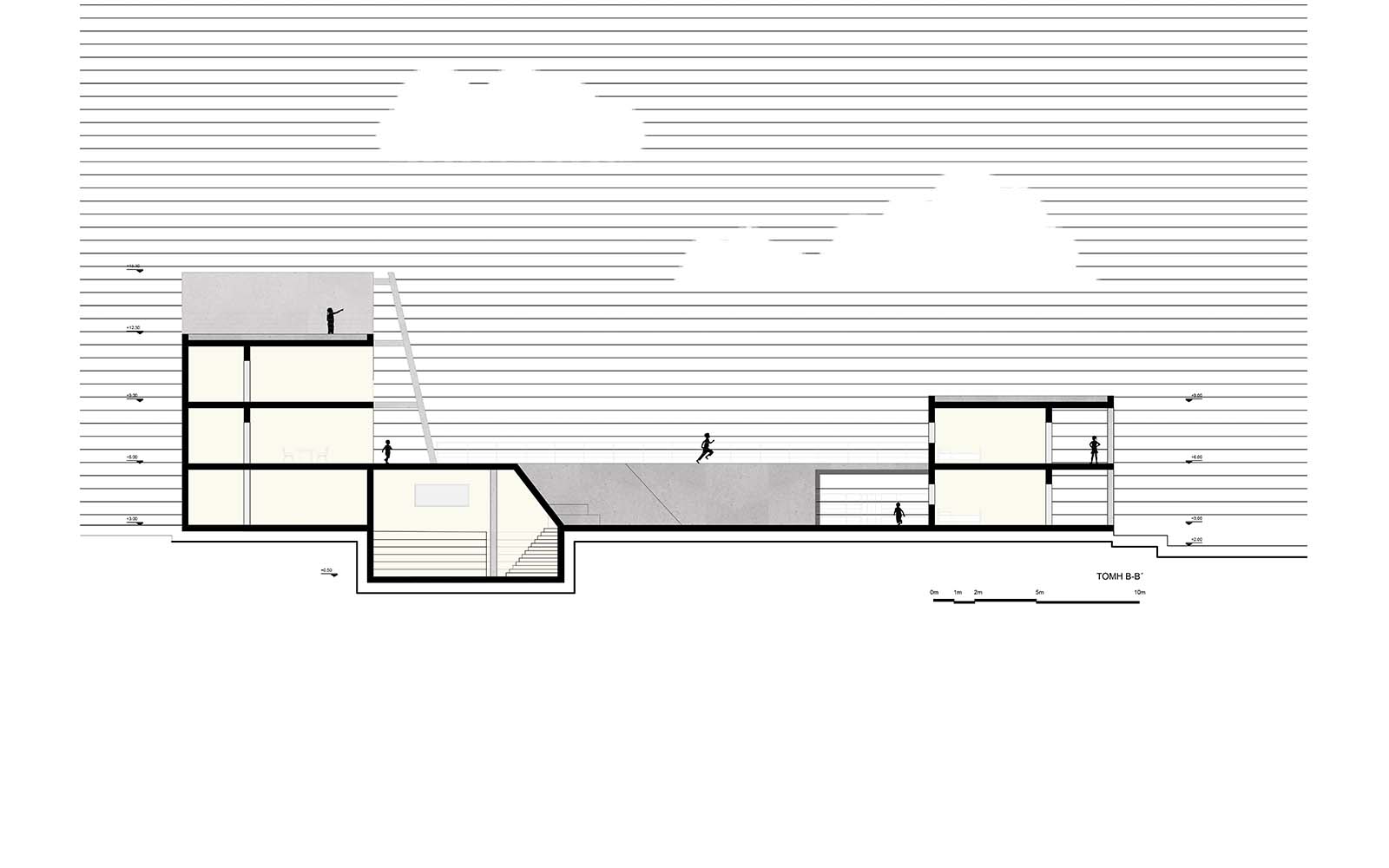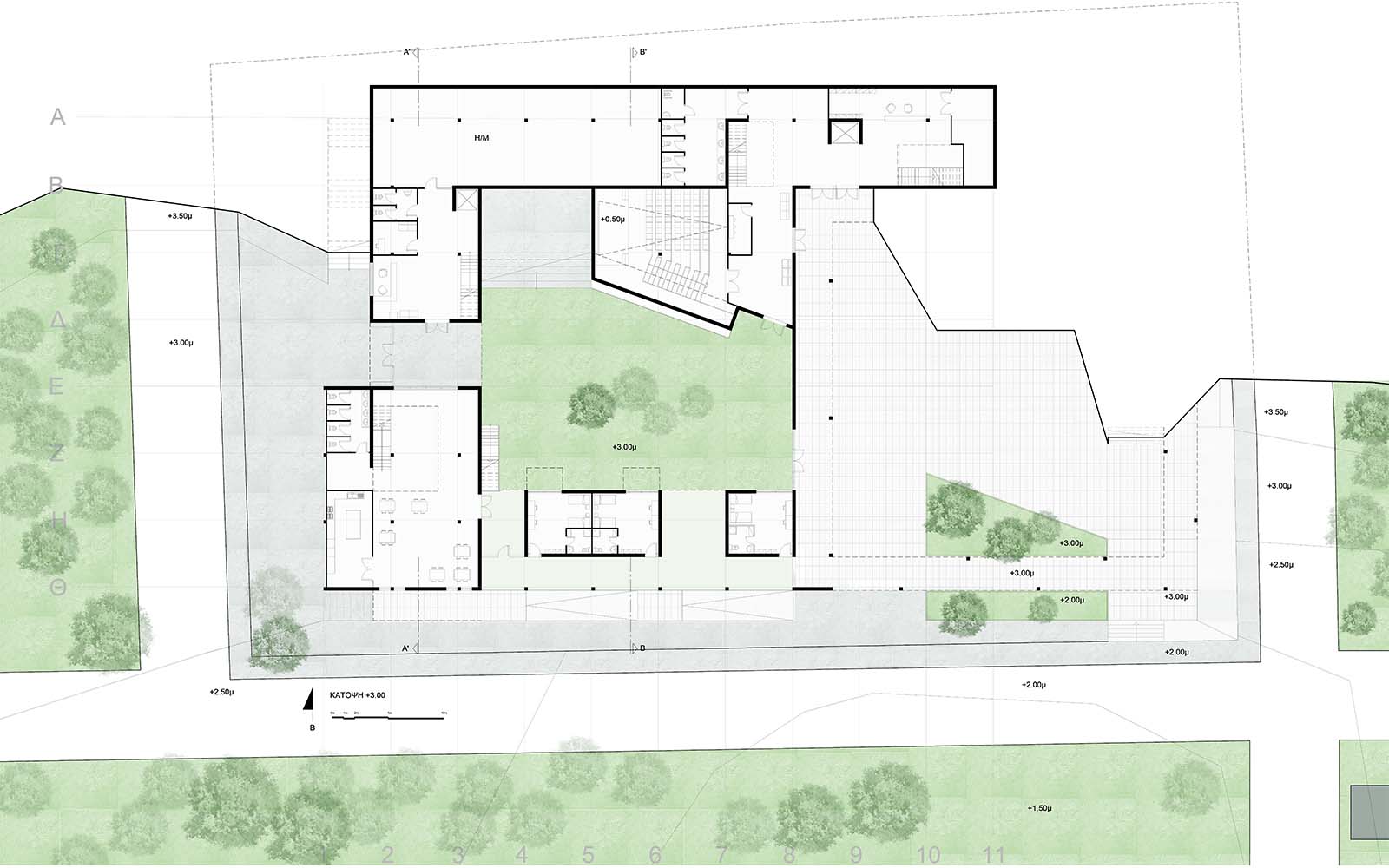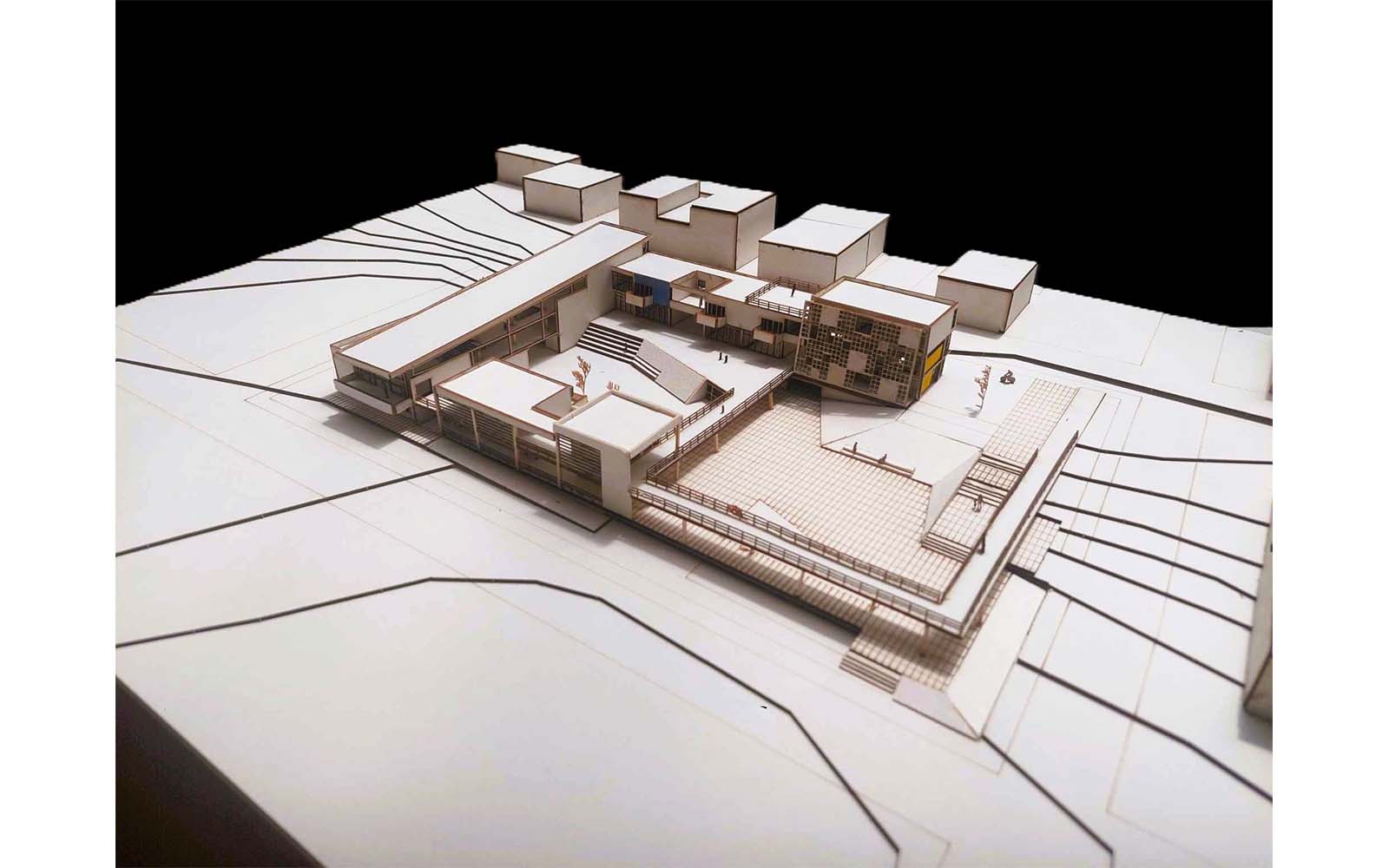The design thesis project by Maria Maliaka, Faidra Trikaliari, Christina Tzika concerns the creation of a shelter for children during periods of forced displacement or crisis by focusing on stability, community, and care.
This project focuses on the creation of a short-term shelter for children, located in Oraiokastro, Thessaloniki.
The shelter’s main goal is to provide a safe, comfortable, and supportive environment for children during periods of temporary displacement or crisis. The shelter’s design prioritizes the well-being of the children while also ensuring practical functionality, accessibility, and sustainability.
The chosen site is situated in a prime location within Oraiokastro, surrounded by natural beauty yet easily accessible by public transport and essential services.
This strategic location ensures that children living in the shelter have access to the necessary resources, while also benefiting from a tranquil environment conducive to their healing and development.
The building’s architectural design focuses on providing a balance of privacy and community spaces, enabling children to feel secure, yet allowing them to engage in activities that foster social interaction and growth. Dormitories will be designed with a focus on comfort and security, offering children personal space while ensuring close proximity to caregivers and staff for safety.
The shelter’s communal areas are central to its design, encouraging interaction and learning. Activity rooms will be provided for various educational and recreational activities, a library to promote reading and learning, and a computer room for digital literacy and communication.
These areas will not only serve as places for learning but also as spaces for emotional and social support, allowing children to engage with one another in a safe, supervised environment.
Outdoor spaces play a key role in the design, with gardens and playgrounds offering opportunities for physical activity, relaxation, and a connection with nature.
These areas will help promote a healthy and active lifestyle while providing children with a sense of freedom and enjoyment.
Support facilities, including a kitchen and dining area, will ensure that the children receive nutritious meals in a warm and homely atmosphere. Staff rooms and spaces for caregivers are also an integral part of the design, allowing them to be close to the children while maintaining the necessary privacy and comfort for their duties.
Sustainability and energy efficiency are also central to the design of the shelter.
Modern building materials and energy-efficient technologies will be used to minimize the environmental footprint of the shelter, ensuring that it remains environmentally friendly and cost-effective over the long term.
The building’s integration into the natural landscape of Oraiokastro will be carefully considered, ensuring that it blends harmoniously with its surroundings and provides an aesthetically pleasing environment for the children.
Ultimately, this project seeks to create a safe haven for children in times of need, providing them not only with a roof over their heads but with a sense of stability, community, and care. The design focuses on making the shelter a place where children can regain a sense of security, receive support, and feel empowered to face challenges ahead.
Facts & Credits
Project title Short-term shelter for children in Oraiokastro, Thessaloniki
Type Design Thesis project
Student Maria Maliaka, Faidra Trikaliari, Christina Tzika
Supervisor Giorgos Papagianopoulos
University School of Architecture, Democritus University of Thrace
Text by the authors
READ ALSO: Πορεία προς την ίαση στα Λουτρά του Ηρακλή: Κέντρο Θερμαλισμού και Ευεξίας στις Πηγές του Καλλιδρόμου | Διπλωματική εργασία των Βαρέλη Αικατερίνης και Κωστή Χριστίνας
